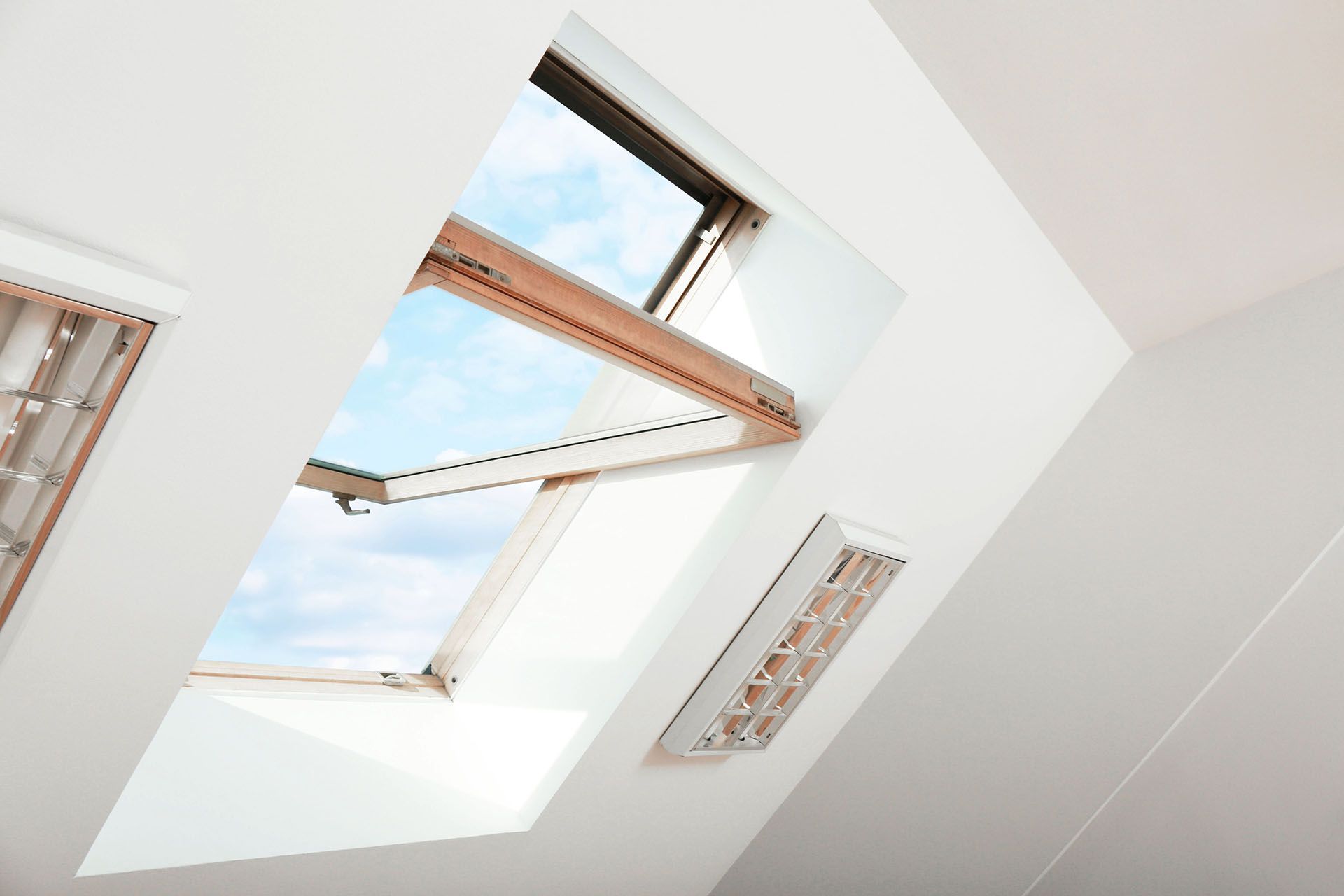Mastering Ventilation: Essential Tips to Combat Mould in Your Home
Mould thrives in silent corners. It grows unnoticed beneath floorboards, behind wardrobes, and within the unseen layers of your home’s building fabric. It may start as a small inconvenience, a bit of discolouration, a musty smell, but its roots go deeper. What begins as a little fog on the windows or a few dark streaks along the bathroom walls can quickly escalate into full-blown mould growth. If left unchecked, a mould problem can affect everything from your furniture to your health.
The real cause often lies in the air itself: stagnant, moist air that has nowhere to go. Without proper ventilation, especially in poorly ventilated areas, moisture has the perfect environment to settle, feed, and spread.
And while the physical signs can be alarming: black mould, peeling paint, or swollen timber, the bigger concern is the invisible: airborne spores released into the air you breathe. These microscopic particles can cause asthma, trigger allergies, and even release mould spores that compromise the quality of life indoors.
Fortunately, mould is preventable. With the right knowledge, daily habits, and smart choices around airflow and insulation, any homeowner can focus on preventing mould and reducing the risk of mould problems significantly.
This blog explores everything you need to know about mould growth, cleaning tips, and practical methods to protect your home and your health.
Why Good Ventilation Is Your First Line of Defence
Just as we exhale to release stale air and inhale for fresh oxygen, a home needs constant air movement to expel moisture, odours, and contaminants like dust and mould spores, helping to remove mould from indoor spaces, often aided by the use of exhaust fans. Yet, many houses are sealed tight; windows shut most of the day, weather-stripping in place, and doors closed to contain heat or cold. While energy-saving, this also traps air inside and allows humidity to build up.
When indoor activities like cooking, showering, drying clothes, or even boiling water aren’t balanced with fresh air exchange, the result is a consistently damp environment. To prevent this, it’s essential to take measures to reduce condensation, as moisture collects on cold surfaces, like glass, tile, and metal fittings, encouraging mould to anchor itself.
To get rid of this, homes need adequate ventilation across all rooms, not just in wet areas. Good strategies include:
- Installing roof ventilation systems that passively draw warm, moist air out of the roof cavity.
- Using extractor fans in kitchens, bathrooms, and laundries.
- Creating cross-ventilation by opening windows on opposite sides of a room, even just once a day.
- Limiting the use of gas heating (which adds moisture to the air) and choosing drier heat sources when possible.
Homes with better air flow tend to have fewer issues with dust mites, mould, and respiratory irritants. Hence, a need for proper ventilation.
When you invest in this, it not only improves indoor air quality but also enhances energy efficiency, as it pays for itself in fewer cleaning hassles, fewer repairs, and a lighter, more pleasant living environment.
How Mould Growth Takes Over Without You Realising
It begins in places you’re unlikely to notice: beneath a carpet that hasn’t fully dried after a spill, behind furniture placed too closely against a cold wall, or inside a window frame that collects condensation each morning.
Mould spores land, settle, and wait. If the surface stays moist, the spores germinate. They begin to feed on organic matter, which can include everything from soap scum, paint binders, and plasterboard to microscopic particles of dust and skin. The result? A slow bloom that begins to darken, spread, and release new airborne spores, ready to start the cycle elsewhere.
But what really drives this isn’t just surface dampness. It’s air quality, indoor habits, and how your home retains or releases moisture. To mitigate this, it’s crucial to focus on preventing mould growth, as every cooking session, steamy shower, or a wet towel on a hook adds moist air to your home’s ecosystem.
High-risk areas where mould growth is common:
- Behind wall mirrors and cabinets in bathrooms
- Under staircases or within closed storage spaces
- Inside wardrobes next to external walls in bedrooms
- Near roof leaks or rising damp areas where moisture creeps in from the ground
With time, these spots can become persistent zones for mould growth, even after basic cleaning. That’s why surface cleaning alone isn’t enough; you need to get rid of the underlying issues and correct the airflow and the causes behind the moisture buildup.
Essential Habits for Preventing Mould
Preventing mould is far easier and cheaper than removing it. Prevention comes down to consistency, attention to detail, and understanding where the risks originate. Here are maintainable habits that help you stay ahead:
Always Keep Air Circulating
Even in cooler months, crack open windows to move air. Bedrooms and living rooms can become breeding grounds when stale air stagnates overnight.
Ventilate When You Shower
A hot shower produces over a litre of moisture per session. Turn on the exhaust fan, leave the bathroom door open afterward, and always wipe down mirrors and tiled surfaces with a microfibre cloth.
Handle Laundry Wisely
Never dry clothes indoors without proper airflow. Even with a clothes dryer, ensure the vent hoses are clean and expelled outdoors. Otherwise, you’re recycling hot, damp air back into your home.
Don’t Block Air Paths
Leave 5–10 cm between furniture and walls. This minor gap lets air circulate behind sofas, beds, and wardrobes, especially on cold walls that otherwise collect condensation.
Insulate Smartly
Uninsulated building materials like plaster and timber get cold fast. That means moist air condenses quickly, encouraging mould spores to grow.
Let Light and Heat In
Bring in more light and fresh air from above. Many rooms are simply too enclosed to stay dry on their own. Skylights fix this at the source. They brighten dim areas like walk-in closets, bathrooms without windows, and central hallways where air and light rarely reach. This passive airflow works every day, with no need for switches or electricity, and without adding to your energy costs.
A skylight actively:
- Encourages moisture evaporation from surfaces
- Warms cold corners that usually host mould spores
- Facilitates vertical air flow, improving overall circulation throughout the home

These are basic changes that prevent moisture from lingering and, in doing so, play a key role in preventing mould. When moisture has nowhere to hide, mould has nowhere to grow.
Safe and Simple Steps to Clean Mould
Once it has appeared, you have two priorities: remove mould effectively and stop it from returning. But be careful. Aggressive cleaning to clean mould without proper setup may just make the problem worse by launching more airborne spores into the air.
Here’s a detailed cleaning process for non-porous areas like tile, sealed walls, and glass:
Prepare the Area
- Put on rubber gloves, an N95 mask, and safety goggles.
- Lay old towels or plastic under the affected spot to catch run-off.
- Open nearby windows for airflow and consider turning on fans pointing outward to assist with removing mould particles from the air.
Loosen Surface Mould
- Use a dry brush to gently remove surface spores.
- If the mould has penetrated plaster or wood, skip this step. Dry brushing may push spores in deeper rather than removing mould effectively.
Spray a Cleaning Agent
- Combine water with vinegar, baking soda, sugar soap, or mild detergent in a spray bottle.
- For tough patches, bleach diluted with water (1:4 ratio) can work but test first on building materials.
Wipe and Rinse
- Use a microfibre cloth to scrub, then a second damp cloth to wipe and rinse.
- Repeat in layers until the stain fades.
Tip: Thoroughly wiping mould with a microfibre cloth helps reduce the chance of it spreading to nearby surfaces.
Dispose Safely
- Seal used materials in a plastic bag and bin them immediately.
- Wash or discard clothing worn during the process.
Never mix bleach with ammonia-based cleaners, and avoid treating mould with dry vacuuming; it can release spores into your home’s air supply. If the problem affects multiple rooms or large areas, professional mould removal products or services may be safer and more effective in removing mould and preventing mould from returning.
What to Look for in a Good Mould Remover
Choosing the right product to get rid of mould means matching the solution to the surface, the scale of the problem, and your household’s needs.
Here’s what to consider:
For painted walls or timber, go for non-corrosive, mild detergent blends
For bathrooms or tiled floors: use chlorine-based formulas to remove soap scum and embedded spores
For eco-conscious homes, try vinegar and baking soda sprays, followed by thorough rinsing
For porous surfaces like carpet or drywall, consider using a mould remover o professional mould removal products designed for deep penetration.
Remember: No product will help if excess moisture and poor airflow remain. Thus, every cleaner should be paired with better ventilation solutions.
Hidden Companions: Mould and Dust Mites
Where there’s mould, dust mites often follow. Both love the same things: warm, damp, and still environments with very little airflow. That means the same solutions that stop mould also reduce mite populations.
- Wash bedding weekly in hot water
- Remove rugs or heavy curtains in humid zones
- Use HEPA vacuum filters and dust with a damp cloth
- Keep sun-blocking furniture away from windows or vents
- Let light in; skylights above sleeping areas help reduce mites by drying out bedding and flooring naturally
Bright, dry spaces are the enemy of dust mites. Letting in more light from above makes hard-to-reach corners less inviting to these microscopic pests.
Why Energy-Efficient Ventilation Is a Long-Term Game Changer
Unlike older systems that rely on mechanical fans or openable windows that let in cold air, energy-efficient skylights offer a passive, sustainable approach. They use natural convection to allow warm, humid air to escape without drawing in unnecessary chill, which is ideal for maintaining thermal balance on cold mornings.
Modern skylights with thermal insulation and UV-resistant glazing not only improve energy efficiency, but also cut down on condensation and indoor humidity, which are the main culprits behind recurring mould problems. And because these systems are solar-powered or passive, they don’t increase your power bills.
Final Thoughts: Fresh Air, Clean Walls, and a Brighter Living Space
To truly keep mould away for good, it’s important to think about how a home handles moisture, not just how it’s cleaned. While surface cleaning helps, it’s only part of the picture. Real mould prevention starts with improving airflow, reducing damp zones, and making sure fresh air moves freely through every space. Small changes like these, when combined, create a home that’s drier, more comfortable, and healthier over time.
At BM Skylights, we understand how health, efficiency, and comfort work together. Our ventilating skylights and roof-mounted systems do more than just brighten a room. We improve airflow by helping you maintain a dry, well-ventilated, and mould-resistant environment with less effort.
So if you’re ready to go beyond short-term fixes and create a home that naturally keeps mould at bay, get in touch with us today. Let the light in. Let the stale air out. And give your home the fresh start it deserves.


